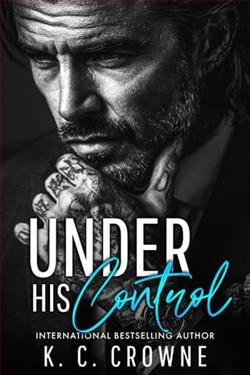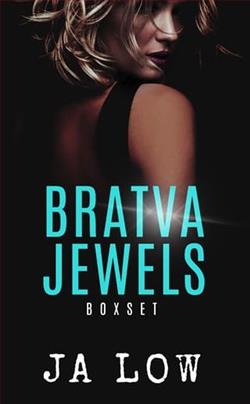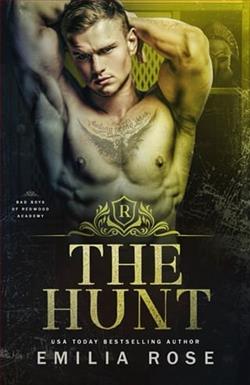Page 41 of The Doomsday Key (Sigma Force 6)
With a grim smile, he headed off.
The day had suddenly gotten much brighter.
3:15 P.M.
Painter headed under the brick archway that passed through the fortress wall of Akershus. Even though it was only a little after three in the afternoon, the sun was already low in the sky at this near-Arctic latitude. Beyond the archway, the fjord’s harbor opened. Snow still frosted the verdigris-stained cannons that lined the walkway and pointed out to sea, ready to protect the town against warships. Though at the moment, there was only a Cunard cruise ship parked dockside.
As seagulls swooped and screamed through the diesel-fouled air, Painter continued along the cruise ship’s towering bulk and aimed for the city proper. Over the past hour, he’d kept tabs on Ivar Karlsen, eavesdropping on his conversations. With the bug, he’d had a good chance to discover more details about the CEO, insights that might prove invaluable for tomorrow’s interview.
The conversations had mostly been of mundane matters, but still, it was clear the man was deeply committed to facing issues of hunger and overpopulation. Karlsen was all about real-world solutions and practicality. It was plainly the man’s mission in life.
Painter also caught an intriguing bit of conversation about the drought-resistant corn strains being developed by Viatus, a version of which had been tested at the Mali research farm. As of last week, mass seed shipments were already under way to places around the world, triggering a spike in stock prices for Viatus. And still Ivar was not satisfied. He promised that his company’s Crop Biogenics division was continuing to craft new strains with desirable features: insect-resistant wheat, frost-tolerant citrus, weed-killing soybeans. The list went on and on, including a rapeseed strain that could produce oil essential to the manufacture of biodegradable plastic.
But the conversation had ended on a darker note. Karlsen had brought up a quote from Henry Kissinger. It had been in response to a question about his company’s shift in focus from petrochemicals to engineered seeds. He had said, paraphrasing Kissinger, “Control oil and you control nations, but control food and you control all the people of the world.”
Did Karlsen truly believe that?
A few minutes after that, the man had climbed into a corporate limo and left for his research complex outside of Oslo. The hidden micro-transceiver had a limited range, so Painter had to abandon his spying for now. And just as well. Karlsen’s talk about the Crops Biogenics division had lit a fire under Painter. He barely felt the cold as he crossed into the shadow of the towering cruise ship and navigated through the passengers hovering at the gangplank.
He had to prepare for another facet of the investigation, one that would require a bit more stealth this evening.
As he moved through the passengers, a burly figure in a parka bumped against him. Spotting the impact a fraction of a second before, Painter instinctively moved to sidestep him. A fiery lance of pain stabbed into his side.
He spun away from it, catching a flash of silver off a knife held low in the man’s grip. If he hadn’t dodged at the last moment, the blade would’ve struck him square in the stomach. He couldn’t count twice on such a lucky break. The man came at him again.
So far, no one else had noted the attack.
Painter snatched a camera from around one of the oblivious tourists’ necks. Gripping the shoulder strap, he swung the heavy Nikon SLR and struck the attacker square in the ear. As the man fell to the side, Painter leaped in closer, snagged the leather strap around the man’s wrist, and used the grip to wrench his struggling form over his hip and hard to the pavement.
The man’s face struck the cement. A bone snapped in his trapped arm. The knife tumbled across the ground.
As yells erupted all around, Painter vaulted over the prone body, going after the loose weapon. Before he could reach it, the knife suddenly jolted, emitting a sharp hissing, and skittered like a loose rocket across the icy ground. Painter hesitated, recognizing the lethal weapon.
A WASP injector knife.
The dagger’s handle held a bulb of compressed gas, making the blade doubly dangerous. Once stabbed into a victim, the press of a button blasted a basketball-sized volume of cold air through the impaled blade and into the victim’s gut, snap-freezing and pulverizing all internal organs. It could kill a brown bear with one jab.
Propelled by the blast of gas, the knife rocketed into the tangle of boots and legs. The waterfront had erupted in chaos. Some people fled from the fight; others crowded closer. Someone shouted, “That guy stole my camera!”
A slew of ship security personnel pounded down the gangway. More forced their way through the crowd.
Painter clutched a hand to his side and dove into the chaos of the churning crowd. The heavy coat and last-minute dodge had saved his life. Still, hot blood welled through his fingers. Fire flamed his side. He could not get caught. Still, it wasn’t only security he had to worry about. As he ran, he kept watch on the crowd around him.
Had the attacker come alone?
Not likely.
As Painter stumbled through the passengers and tourists, he searched faces around him and watched hands. How many others were disguised like the first one, planted in the crowd and guarding this exit out of Akershus?
He knew one thing for certain. This had been no random mugging. Not with the attacker wielding a WASP injector. Somehow his cover had been blown. A net had been set up around the fortress grounds.
He had to get clear of the docks, put some distance between himself and the ambush. The crowds grew less tight around him as he hopped into the parklands that bordered the dock. Icy snow covered the ground and crunched under his boots. Bright red drops splattered into the snow. He was leaving an easy trail to follow.
Fifty yards away, another man in a parka hopped the border fence and came tromping toward him. So much for the subtle approach now. Not knowing if the man had a gun, Painter turned and fled for the patch of pine trees that filled the back half of the park. He had to get under cover.
The assassin followed the fresh trail of prints in the snow. He ran in a low crouch, his blade clutched in his left hand. He hit the tree line and kept one eye on the trail and the other on his surroundings. Under the trees the way became shadowy but not so dim that he lost sight of the trail. No one had been through here since the last snowfall. Only one set of prints marred the virgin snow.
Along with a dribbling track of blood.
The path zigzagged through the trees. Clearly the target feared a gun and took up a defensive pattern. It was a waste of effort. The assassin cut a straight path through the forest, paralleling the crooked flight.















